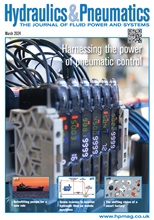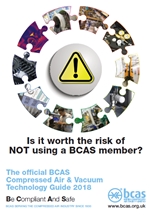Engineering and the gender issue

Over the years engineering – often cited as one of the strongest examples of a male-dominated industry – has shone a particularly strong light in the direction of inspired women who have not only survived but excelled in the profession. Just a few of the many success stories are: Emily Roebling (1803-1903) is a name synonymous with the Brooklyn Bridge, completed in the 1880s; in 1926, Lillian Gilbreth (1878-1972) became the first female member of the American Society of Mechanical Engineers; during the 1920s Beulah Louise Henry (1887-1973) patented an array of innovations, from a bobbin-free sewing machine to a typewriter that was able to produce multiple copies of script without the need for carbon paper; Mary Anderson (1866-1953) did all drives of vehicles a major favour by inventing the windshield wiper. It is barely worth beginning such a list, as the panoply of female success within the engineering discipline over the years has been impressively extensive.
That said, it would appear that a considerable number of female engineers today are leaving the field due to a culture that does not take them seriously. This is a key finding of Professor Brian Rubineau of Desautels Faculty of Management, McGill University. Rubineau, along with co-authors Carroll Seron (UC Irvine), Erin Cech (University of Michigan) and Susan Silbey (MIT), have found that unchallenging projects, sexual harassment and greater isolation from support networks contribute to women’s exit from engineering. Rubineau commented: “Although engineering programmes have focused on reforming their curricula to encourage women’s participation, we are finding that social interactions outside of classrooms are contributing substantially to women’s negative experiences of the field. It is clear that engineering schools must broaden their efforts beyond the classroom to ensure they are not only attracting top female talent, but retaining it.”
Their longitudinal study followed 700 students from four schools – MIT, UMass, Olin College of Engineering, and the women-only Picker Engineering Programme at Smith College – during their four years of college and again five years after they graduated. The study examined students’ voluntary diary entries and focused on interactions with other students in classes and projects, as well as college culture and future occupational and family expectations. “Many of the women in our study experienced blatant gender bias in their project teams and internships,” continued Rubineau. “Much of the hands-on aspects of engineering are treated as men’s work, with women relegated to more secretarial duties. This culture of sexism and stereotyping sidelines qualified women, who then often choose a different career path. A second source of this gendered discontent concerns the role of engineers in society. Women, more so than men, cite engineering’s potential for improving society as their motivation for pursuing a career within the field. But in their internships, women saw only lip service offered towards improving society. Disillusioned, these women are often inclined to change career path to find a better cultural alignment with their values and goals.”
It would be interesting to see similar studies undertaken in the UK or further afield in Europe. Nevertheless, it would appear that, after all these years, there remains an unacceptable level of gender prejudice, bias and stereotyping within the engineering sphere. What’s the solution? I think this issue really needs to be addressed from the ground up – from the moment education and training begins, through to apprenticeships, higher education and beyond. When bridges and invaluable vehicle accoutrement (not to mention Hollywood star Hedy Lamarr’s remote-controlled communications system used during World War II by the US military) are on the table, I think the point is soundly made. Let’s move on.
Ed Holden
Editor
-
Smart Manufacturing & Engineering Week
05 - 06 June, 2024
NEC, Birmingham -
HILLHEAD 2024
25 June, 2024, 9:00 - 27 June, 2024, 16:00
Hillhead Quarry, Buxton, Derbyshire UK










